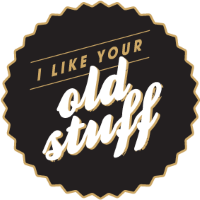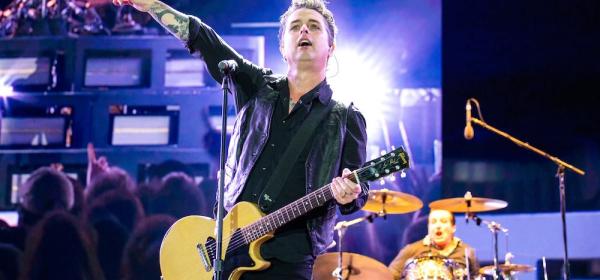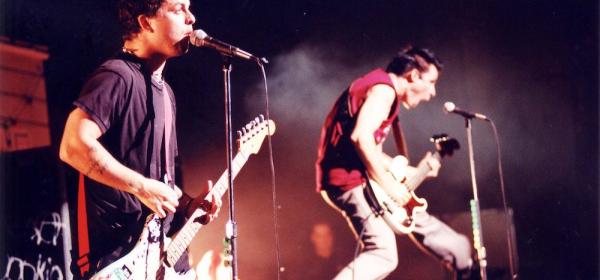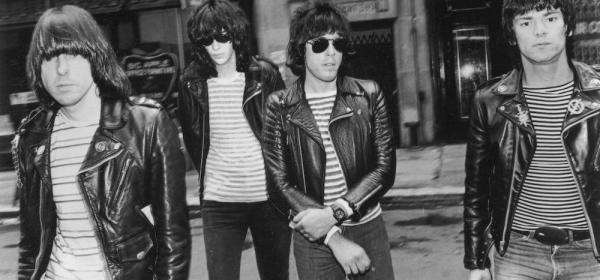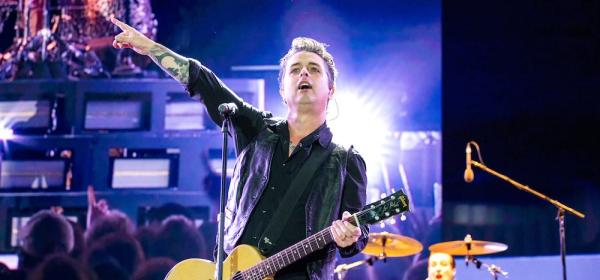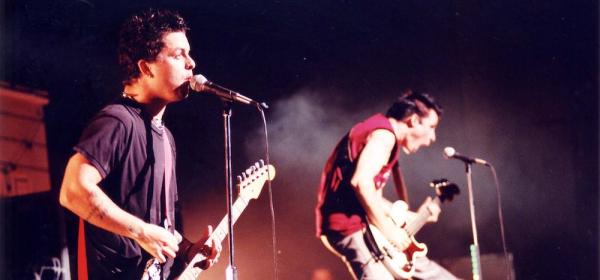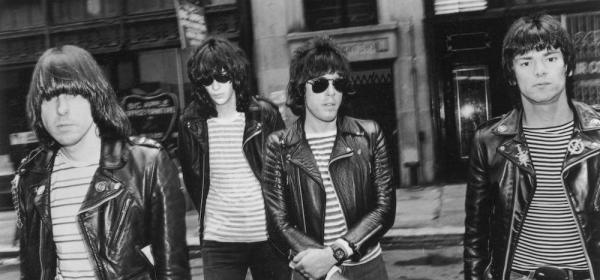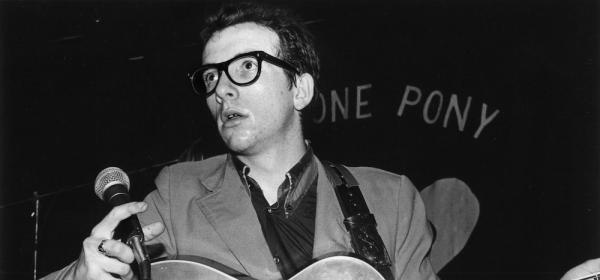Long before their logo became a ubiquitous t-shirt design and indeed long before their sound was translated for millions of kids around the world by the likes Green Day in the ‘90s, the Ramones had a special relationship with Australia. Going right back to their first album and beyond, the Ramones struck a chord here; one that went beyond being just the opening salvo of punk. There was something about the guitars and the beat of the Ramones music that resonated with us, and something about their simple pure rock’n’roll that hooked us. Aussies have long loved loud, catchy rock’n’roll – we’re the country that gave the world AC/DC after all. And the Easybeats before them of course. We were the first country outside of the US to really take to Kiss as well – we love it loud. Actually, it probably goes back to the reception we afforded the Beatles in ’64, and the proliferation of garage bands that followed in Australian towns and cities in the Beatles’ wake. Or maybe it goes back to JO’K, or to Little Richard, Gene Vincent and Eddie Cochran touring here in ’57 and Buddy Holly in ’58; or to the Surf Stomps around Sydney’s beaches in the early ‘60s. It certainly goes through to our love of amped up ‘50s & ‘60s rock courtesy of Billy Thorpe & the Aztecs, the Coloured Balls and Slade in the early ‘70s too.
Of course, we had our own versions of the Ramones before anyone in Australia – or outside of New York for that matter – had ever heard of them. The Saints in Brisbane and Radio Birdman in Sydney shared musical influences – the Stooges, ‘60s rock - and a disheveled wardrobe with Johnny, Joey, Dee Dee and Tommy. Both were signed by Seymour Stein of Sire Records – the Ramones’ label - for the US too. The Saints ended up following the Ramones into the wide world of punk rock with the release of their "(I’m) Stranded" single coming just a few months after "Blitzkrieg Bop" and the Ramones’ first album. Birdman tried to follow a year or so later but stalled - although their own unique influence on the rock’n’roll world continued following their demise, and really kicked in in the ‘80s, around the same time that Ramones started enjoying a second wind. By that time a uniquely Australian style of rock’n’roll was being recognized internationally. The main instigator had been Radio Birdman, but the Saints were in there as well. The Stooges and yes, the Ramones were a massive part of it too.
From the early ‘80s on, the Ramones influence has been ubiquitous in this particular thread of Australian rock’n’roll. The Scientists, the Hard-ons, the Celibate Rifles, the Hoodoo Gurus, the Exploding White Mice, the Meanies, Frenzal Rhomb, the Straight Arrows – the list goes on. The ’85 debut single – "Johnny & Dee Dee" - by Sydney’s tragically short lived Eastern Dark (literally tragic – the band folded after their van run off the Hume, killing singer/songwriter guitarist James Darroch) resonated hugely upon its release because it was a love letter to the Ramones that so many people could identify with it.
Over the last few months, ILYOS asked some of its favourite Aussie rockers to tell us what the Ramones mean to them. Putting together their responses have given us a pretty good idea of just what it is those delinquents down-under love about the brudders from Queens.
GREG MACAINSH – SKYHOOKS
The biggest band in Australia at the time that the Ramones started making waves in New York was Skyhooks. Unlike many musicians of his generation, Skyhooks main man Greg Macainsh very quickly become a fan…
"One of the great things about touring America in 1976 was FM rock radio which didn’t really happen in Australia in a commercial sense until 1980 despite a couple of community stations in the capital cities. Listening to the local stations in the southern states it was Lynrd Skynrd, Atlanta Rhythm Section, Charlie Daniels Band and the broader, standard fare of the likes of Supertramp and Steely Dan. Heading northward, the playlists shifted somewhat and one day, in a motel room at a Howard Johnson’s somewhere in New Jersey, I heard a tune that stood out amongst the standard fare of Fender Rhodes and twin harmony guitars that constituted a lot of Adult Oriented Rock.
“Blitzkrieg Bop”, all two minutes and twenty seconds long, sounded as fresh and electric as Eddie Cochran must have back in the fifties. The “Hey Ho, Let’s Go” vocal chant was an instant trademark and there was a neatness in the production that kept the dirty excitement focussed in a way that made the Ramones very radio friendly. I bought their first album and over the following years, many others. Lyrically The Ramones were honest and unafraid, but then again most of us were back in the 70s. “Beat on the Brat” would probably unleash a firestorm of protest from concerned social justice warriors these days. Let’s not even get to “The KKK Took My Baby Away”!
Musically minimalist, with vocal high up in the mix, shorter than normal playing times and with the absence of flashy guitar soloing, The Ramones message was emphatical to the point.
The listener had the very clear choice of either love it or leave it.
I saw them at Monash University and again in Freemantle sometime in the 1980s. They were thankfully painfully loud but mostly shambolic and it was apparent that their internal chemistry was at odds with the best practice of their recordings on those nights. Nevertheless, their initial precision and uniqueness clearly set them apart as the true initiators of punk rock. When the Sex Pistols broke through in 1977 from England, The Ramones natural ease, simplicity and impeccably stated message was something that the plethora of UK bands that followed could never quite eclipse."
-Greg Macainsh, Skyhooks
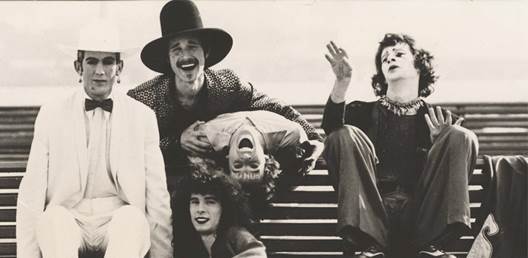 Greg Macainsh (left) and Skyhooks
Greg Macainsh (left) and Skyhooks
Off course Skyhooks, for all their popularity, cut against the grain in their own way too…
JIMMY MANZIE - OL’55
Briefly even bigger than Skyhooks in ’76 were Sydney’s Ol’55. Known for their ‘50s covers, Ol’55, beneath the retro schtick, were a fine 50’s/60s influenced pop band and shared many influences with the Ramones – both bands even recorded a cover of Bobby Freeman’s "Do you Wanna Dance" inspired by the Beach Boys version. Ol’55 songwriter Jim Manzie was a fan….
"I love the Ramones! Of course, I do, they are pure pop and punk at the same time! I especially love the rock solid drumming and the pile driving metronomic beat, so steady. This is some of the best drumming in rock. Every record producer would love to have a rhythm section like the Ramones in the studio. What could go wrong?
I would also add that the Ramones are just like the Beach Boys but without the great singing! Sheena is my favourite track of theirs. I met one of them in Canters Jewish Deli in Los Angeles decades ago. But since they all look alike, I don’t remember which one it was. He was with Rodney Bingenheimer, the KROC disk jockey."
-Jimmy Manzie
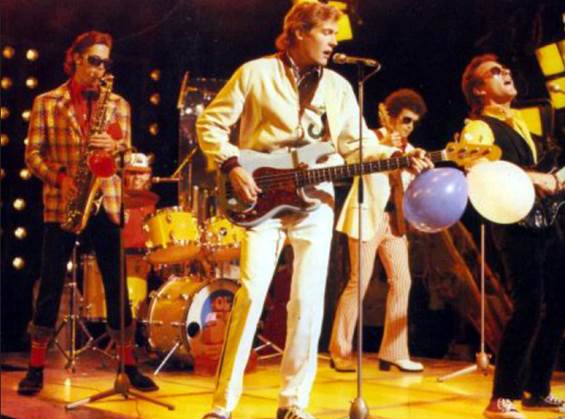 Jimmy centre stage with Ol’55
Jimmy centre stage with Ol’55
ILYOS has always thought Joey Ramone, in particular, would like the best of Jimmy’s songs for Ol’55, including this fabulous Phil Spector/Beach Boys/Four Seasons inspired number, a big hit for the band in 1977:
DENIZ TEK – RADIO BIRDMAN
Of course both Skyhooks and Ol’55 were mainstream rock compared to what was coming through on the underground. As mentioned, Sydney’s Radio Birdman, who formed in the same year that the Ramones formed (1974), instantly recognised this new band out of New York as an ally.
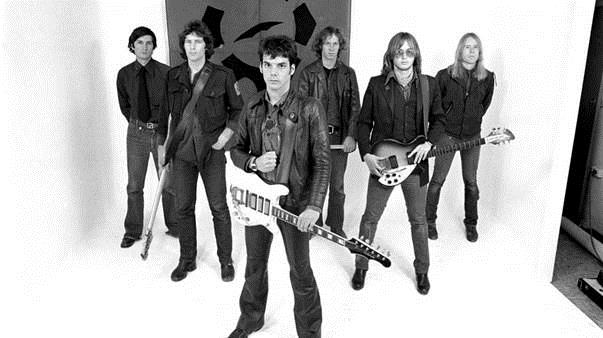 Deniz front and centre with Radio Birdman
Deniz front and centre with Radio Birdman
"Rob (Younger – Radio Birdman vocalist) and I got the first Ramones album when it came out as an import, probably from White Light Records. The first thing we thought looking at the sleeve was: “Wow - someone else who dresses like us!” We were already into Suicide’s Alan Vega, who was like a return to Elvis, and the New York Dolls, who were a return to early American rock and roll. The Ramones were the third in the progression, and they were a return to 60’s British pop music. All catchy tunes, with drums and vocals up front, and simple guitar and bass at the back of the mix. They had a sense of humour, too. You couldn’t miss the connection between Joey’s vocals and Ray Davies (check out "Set Me Free"). We loved them! Their classic approach inspired me to simplify my own songwriting, resulting in songs like “More Fun”."
- Deniz Tek, Radio Birdman
"More Fun" indeed. From Radio Birdman’s second album Living Eyes, recorded in 1978, released posthumously in 1981.
ORIGINAL MELBOURNE PUNK - GAVIN QUINN OF BABEEZ/NEWS, BRUCE MILNE & PHILIP BROPHY
Birdman was already making waves in Sydney when the Ramones first album was released and the worldwide punk movement had its first studio document. In Melbourne, as elsewhere, young musicians trying to create new music suddenly had a galvanising new influence. Gavin Quinn and Jarryl Wirth were members of a glam-influenced group called the Fallen Angels who would soon become Babeez and release Melbourne’s first punk single, "Nobody Wants Me".
“Jarryl Wirth and I went to a party at Bruce Milne’s house where we heard the Ramones for the first time. Humour was always a big thing with us and the Ramones were FUNNY. After rolling around on the floor for a while from the initial impact the elegant simplicity of what they were doing made its impact and helped guide our own musical efforts.”
-Gavin Quinn, Babeez/News
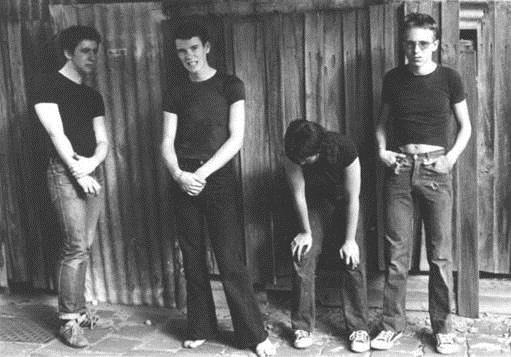 Gavin Quinn – second from left - in News
Gavin Quinn – second from left - in News
Babeez became News and developed an even more, Ramones-like sound, albeit one with a political edge…
Gavin’s mate Bruce Milne had played with Gavin and other Babeez members in the party band Antennae & the TV kids (Bruce's name), playing 60's pop material, before the Ramones album came out. Bruce would subsequently become the key punk scenester in Melbourne. He would publish the first fanzines, Plastered Press and Pulp, and subsequently, start Au-go-go Records. He also helped out new bands including the Young Charlatans, featuring a young Rowland S Howard, and the Boys Next Door, who would soon enough become the Birthday Party, and of course give the world Nick Cave.
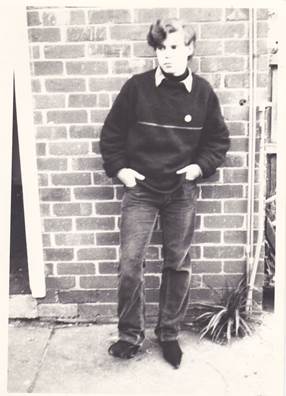 Bruce Milne, 1976
Bruce Milne, 1976
"It seems strange nowadays but once even tiny newsagents had a section of music magazines from around the world. You could find the weekly U.K. papers (Sounds, Melody Maker, New Musical Express and a bunch of others) plus monthly U.S. magazines (including Creem, Circus, Hit Parader, Crawdaddy and, again, a bunch of others). They were all, to various degrees, essential reading. My friends and I would buy them, share them and devour them.
That’s how we discovered the Ramones. Long before they recorded, pictures of the Ramones started to appear in magazines (such as NYC’s Rock Scene) and they looked so perfect.
The mid-70s was an era of either patched/ flared/appliqued jeans or brightly colored, crotch-strangling satin daks. The Ramones were the antithesis of all that and they stood out. We didn’t need to hear them to fall in love with them. Though the descriptions of their music in the press sounded so great – short/sharp songs, simple/shocking lyrics, manic speed and plenty of “fuck you” attitude. They were the new generation. They were the band for our generation.
And finally, the first album arrived. I bought it the day it hit the import stores in Melbourne. As I played it for the first time I still clearly remember thinking that this was a moment in history – that version of the moment (in the fifties) when kids first heard Chuck or Elvis or (in the sixties) the Beatles or the Stones. I knew my world had changed at that moment.
There is no objectiveness when I hear the first Ramones LP. And I hope there never will be."
-Bruce Milne, Plastered Press, Pulp, Au-go-go Records
Bruce’s pals The Boys Next Door first gigs were in August 1977. One of them was recorded, and released some years later on a bootleg cassette. Ignore what it says on Youtube – this version of ‘Blitzkrieg Bop’ is from that show.
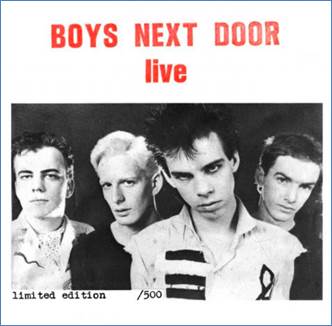 Boys Next Door bootleg cassette cover
Boys Next Door bootleg cassette cover
Another figure on the Melbourne punk scene – and another friend of Bruce Milne’s - was Philip Brophy. Brophy played drums in experimental outfit (pronounced as three clicks, often written incorrectly as Tsk Tsk Tsk or Tch Tch Tch) and would go on to be noted electronic musician, filmmaker, artist and academic. In 1977, he organised a legendary sidewalk punk ‘festival’ in Carlton called ‘Punk Gunk’.
“May ‘77. New York monthly “Rock Scene” carries a ‘New York Rock Report Special’ (though Ted Nugent was on the cover). A picture spread has The Ramones awkwardly posed around CBGBs and Washington Square Park. Their hair is only slightly longer than on the cover of their first album. Everything looks suburban. This was the Ramones greatest achievement: making Manhattan seem like Queens. “Rock Scene” kept living in a NY-Glam hangover, with David Johansen and Cyrinda Foxe forever drinking with Richard & Lisa Robinson. Put the first Ramones LP cover next to the New York Dolls’ same: both B&W, sneering & grubby, speed & ludes. Yet a wafer-thin fissure splits Johnny Thunders into Deedee Ramone. The bouffant becomes a pudding bowl. The sound of hairspray becomes steamrolled power chords. The Ramones pave the way for many to come.”
- Philip Brophy, drummer
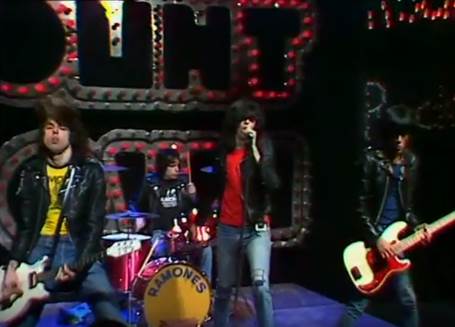 That’s it for Part One. Next time we jump over to Perth and up to Brisbane – The Scientists, the Victims, The Fun Things, then back to Sydney with the Hoodoo Gurus, Lime Spiders, Hard-ons and more, before we start getting into the ‘90s and beyond with the Meanies, Frenzal Rhomb, the Spazzys, right through to the Dune Rats and more. Stay tuned for more Rock’n’Roll Radio!
That’s it for Part One. Next time we jump over to Perth and up to Brisbane – The Scientists, the Victims, The Fun Things, then back to Sydney with the Hoodoo Gurus, Lime Spiders, Hard-ons and more, before we start getting into the ‘90s and beyond with the Meanies, Frenzal Rhomb, the Spazzys, right through to the Dune Rats and more. Stay tuned for more Rock’n’Roll Radio!
The Ramones' Leave Home: 40th Anniversary Edition is out today, here.
- DL
